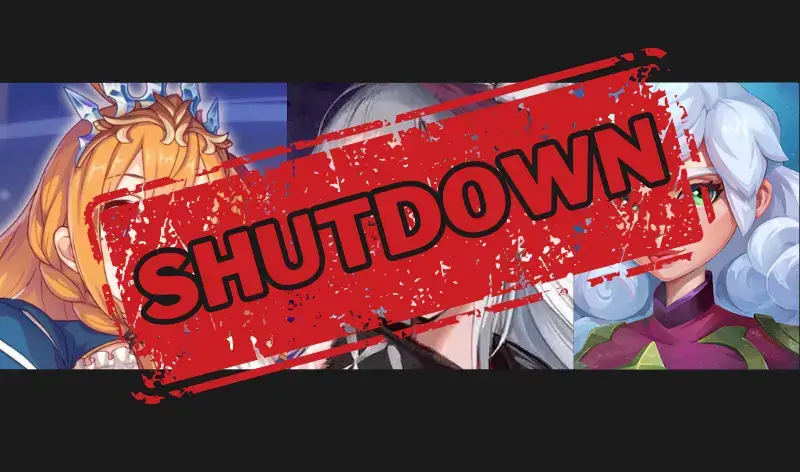
You log in to your favorite mobile gacha game so that you can knock out your dailies, use your free summons, and sweep your tower floors. But before you do any of that, you’re greeted with an announcement pop-up. “It is with a heavy heart…”, “we appreciate the support but…” End-of-service announcements (EoS) are one of the most heartbreaking announcements that a mobile gacha gamer can log in to see, and unfortunately, many of us have seen it fill our screens this year.
What factors lead a company to decide to call it quits, and how come we consistently see more mobile games shut down (or announce their shutdowns) in March? The latter has a simple answer: March 31st is the end of the first quarter of the year (Q1) and is also many companies’ fiscal year-end. This is when companies must report their yearly earnings for tax purposes and also when critical discussions take place regarding the direction of the company.
When it comes to a mobile gaming company, this is when data is analyzed and strategies for the next year may be introduced or adjusted. For companies that see a steep decline in revenue, a tough decision has to be made. Can they justify a continuation of service with a dwindling revenue stream? Do they have another game/product that is doing well that they ought to focus their funds and efforts towards instead?
It’s important to remember that the games we play have companies behind them, and those companies have shareholders. Whether we like it or not, our favorite games need to make money and they require a solid plan to do so in order to satisfy their shareholders. Of course, how they go about monetization is a very delicate subject, but we’ll save that for another article.
We’re seven months into 2023 and we’ve already seen a dozen games shut down their servers. Sometimes there is an abrupt ending with players getting very little notice, other times players are told a few months in advance. To cover each of these games would make for quite a lengthy article, so I’ve picked out three that stood out to me, whether that’s due to the popularity of the game, the drama surrounding it, or a bit of both.
Table of Contents
Princess Connect: A Global Server That Came Too Late
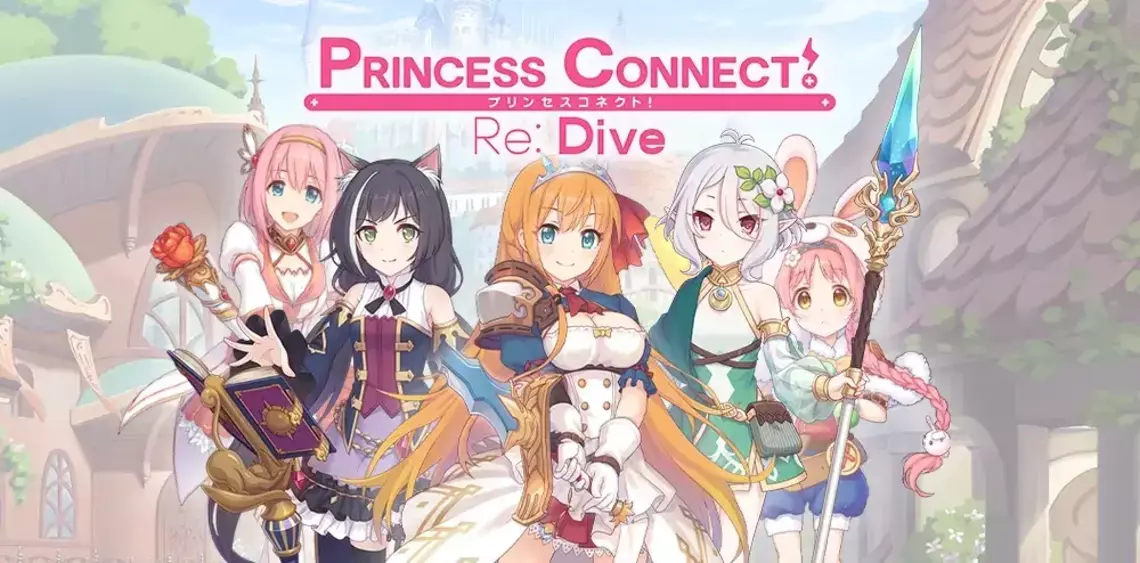
Starting with what is arguably the biggest EoS to happen in 2023: Princess Connect! Re: Dive Global. Princess Connect or Priconne is a beloved IP and the global server was highly anticipated. The EoS announcement that took players by surprise was posted on March 31st, 2023 that stated the global server would be shut down on April 30th, 2023. The global server was launched by Crunchyroll Games in January 2021. Though the global server was over three years behind the Japanese server, many users looked forward to playing the global version since they wouldn’t have to jump through hoops to play the Japanese one. But some may say that this massive gap between the global and Japanese servers contributed to the low player count since many of the quality of life (QoL) features that Japan had introduced weren’t included.
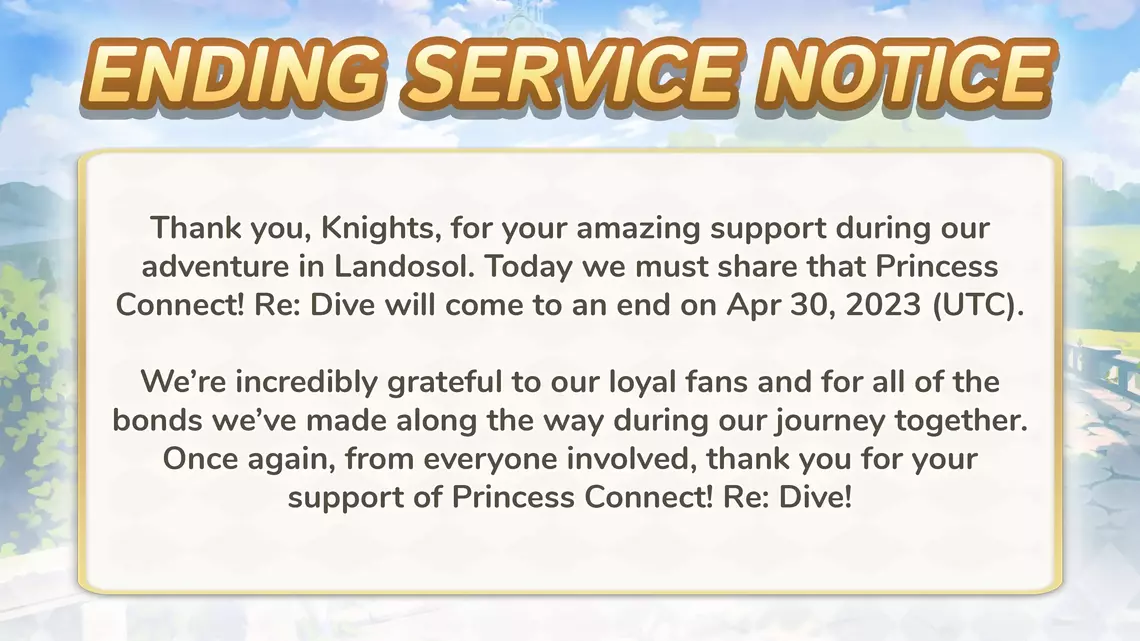
At its peak, Priconne had over 300k+ active players and actually maintained those 300k up to the EoS announcement. Unfortunately, the player count isn’t the only factor in determining if a game should go on. In fact, when the time comes for a company to sit down and make critical decisions such as EoS, it’s not the active players but the paying players that they’re looking at. According to Sensor Tower, within their last quarter before making their EoS announcement, Priconne went from $400k in January, to $300k in February, and then ended their quarter in March with $180k. They quickly went from a $1/player average to a $0.60/player average.
It’s still unknown whether Crunchyroll Games themselves pulled the plug, or if Cygames (the original developers) made the call. There are rumors of disagreements between Crunchyroll Games and Cygames surrounding the monetization of Priconne, but there isn’t any definite information as to who ultimately made the decision to shut the global server down. But looking at the revenue, it’s safe to say we know why they did so.
Revived Witch: When the Culture Isn’t Enough
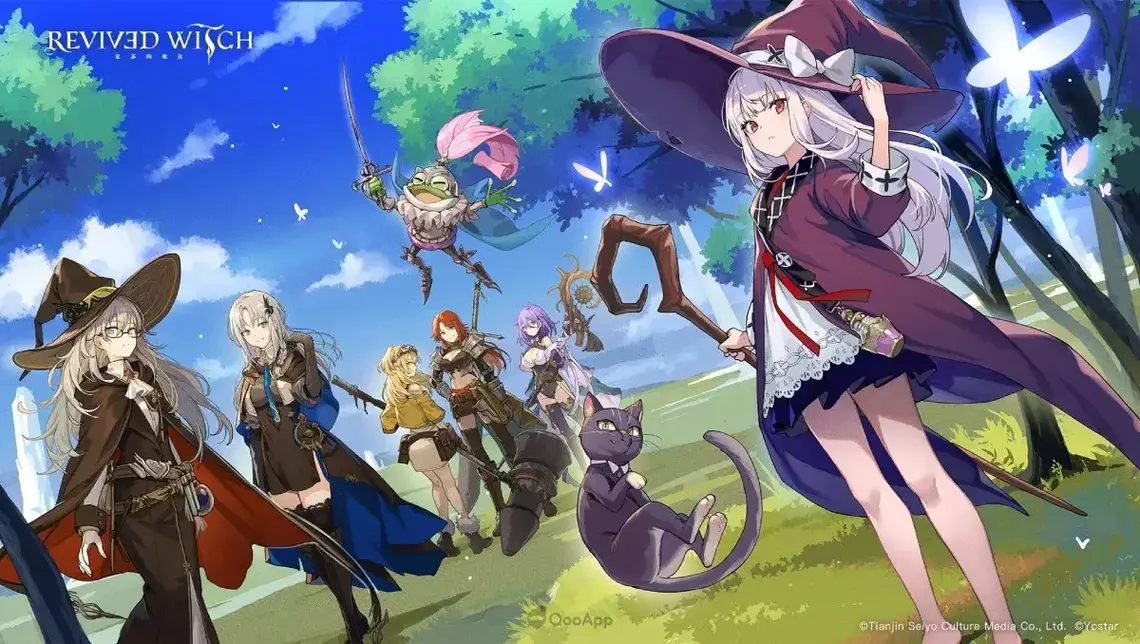
A game that had an art department that did its best to carry player interest on its back, Revived Witch, launched on November 10th, 2021. The community seems to all agree that the art and music within the mobile game was its only saving grace. Many players have expressed their desire for the art and music department to stay in the industry and hopefully find their place in another game that might have gameplay that is worthy of their contribution. The gameplay itself is described as simple, boring, and outdated, leaving players with much to be desired. Unfortunately for Revived Witch, the waifu stopped being laifu in Q1 of 2023, and on March 6th, the developers announced May 7th, 2023 as the final day for the servers.
While art and music can certainly turn a profit, a mobile game requires much more in order to be considered successful. Monetization is a tricky enough concept within a gacha game, requiring a delicate balance between satisfying your free-to-play players and giving whales, the players willing to spend their hard-earned money, an incentive to make purchases. All this has to be done without giving the whales too much of an advantage over the free-to-play player base. But none of this matters if the game isn’t interesting enough to warrant a purchase at all.
Revenue for Revived Witch was already in a rough spot in 2022. Come January, the monthly revenue was sitting at $30k, which was actually an increase over the $19k made in December 2022. It didn’t take long for the game to come back down from its holiday highs, as in February, the game made only $18k. It’s no wonder the decision to announce the EoS came on March 6th.
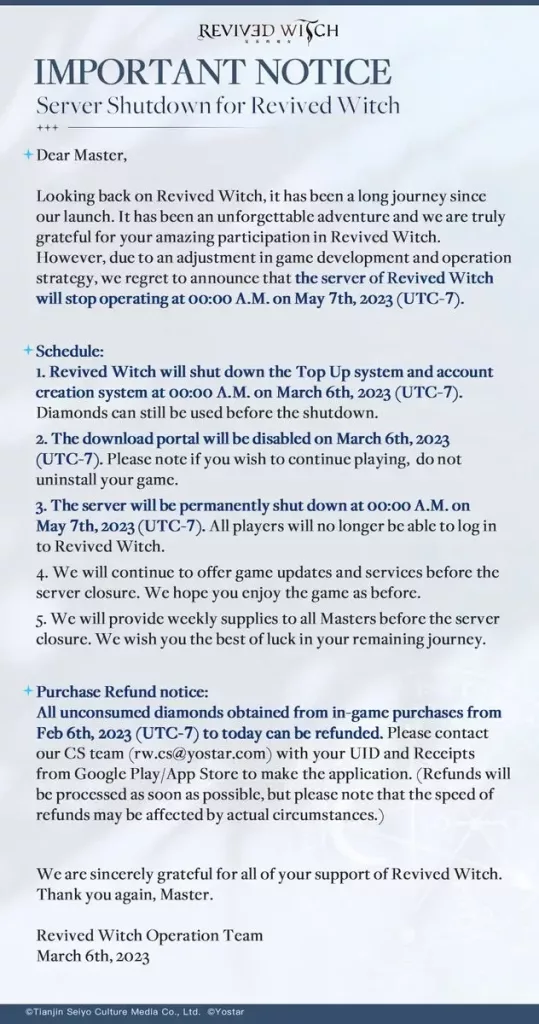
Something that doesn’t happen frequently with these mobile gacha game EoS announcements is a refund policy. The Revived Witch developers offered a refund for any unused premium currency that was purchased within a month of the EoS announcement (February 6th). While this is nice, players are still upset that any money they threw towards the game for the year and a half that it was alive will effectively be going to waste.
Revived Witch managed to hold on for a year and a half before calling it quits, but the next game we’re taking a look at threw in the towel as soon as the bell had rung.
Ezetta Prophecy: the Importance of Launch Strategy and Beta Testing
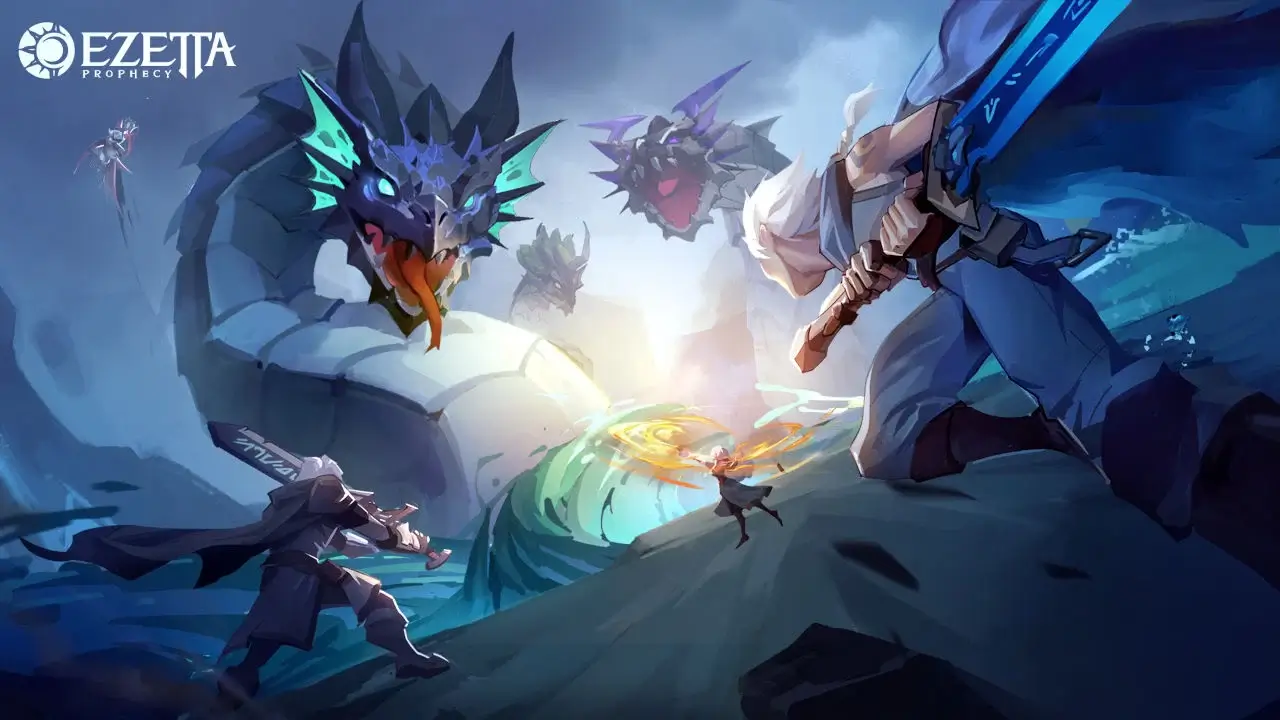
Ezetta Prophecy chose a launch strategy that simply didn’t make sense. Even before I dove into researching the stats for the game, I could already see why the mobile gacha game didn’t do too well. The mobile gacha game launched on June 6th, 2023 for PC and Android users, with an iOS launch promised to come at some time in the future. On July 7th, the developers announced that the servers will be shutting down on August 6th. A two-month lifetime, and believe it or not, that’s technically not the mobile gacha EoS speedrun record.
Without the revenue stream from iOS users, it was up to the Android and PC players to keep the game alive. If an iOS version wasn’t ready to be launched, surely they could’ve waited so that they could launch on all three platforms at the same time. In an oversaturated market such as the mobile gacha gaming genre, you can’t afford to be missing any of the common features that just about every game has. When marketing to the mobile gaming audience, you’re effectively cutting your potential reach in half by not providing an iOS version at launch.
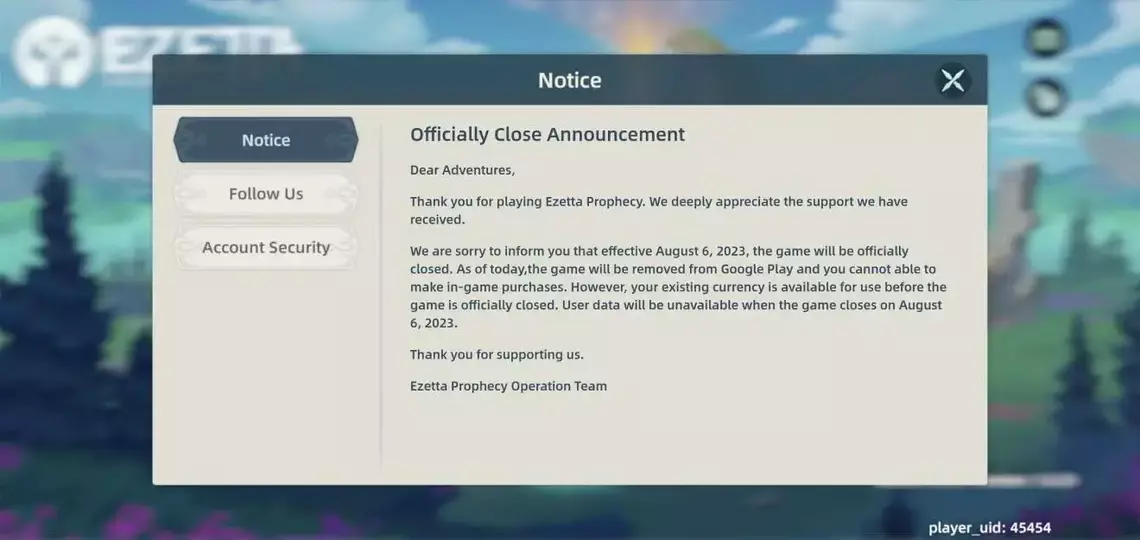
After doing a bit of research, I quickly found that the lack of an iOS version was hardly the only problem that Ezetta Prophecy had. While the game boasted a wide variety of game modes, there was a lack of effort toward the balancing of the gameplay. While stage-based mobile games are meant to have some challenges at key stages such as mid-bosses, area bosses, etc., Ezetta Prophecy sported random difficulty spikes through the stages. Players could breeze through a boss, just to get completely destroyed in the next regular stage and have to spend days increasing their team’s power before they can pass it.
The gamers of Exus Network (Youtube, Twitter) who are known for being some of the top hardcore mobile gacha gamers around, said that even the hardcore players were struggling to get through the normal content. When your top players that are experienced with optimizing their routines and spend a considerable amount of time playing are having a rough time progressing, then the casual players that only have enough time to play an hour or two each day are stuck at a wall for weeks at a time. With no chance of progressing, most players won’t bother to fit a game like Ezetta Prophecy into their precious gaming schedule.
One of the beauties of mobile gaming is the ability to squeeze some play time into your day when you’re on the move. Some players knock out their dailies during their breaks at work, during transit (public transportation, don’t gacha and drive please), or in between classes. This brings us to another issue that Ezetta Prophecy had during their rough month. For the players that did stick around to try to push through the content, they were met with frequent disconnects during gameplay and many users reported that they couldn’t play the game with mobile data.
With little to no attempt at game balance, half of the mobile gaming market being left in the dark, and annoying connection issues, players knew that Ezetta Prophecy wasn’t worth their time or money. This is made clear in their reported $9k revenue last month. Launch months are typically some of the highest-grossing months for mobile gacha games. For it to not even break $10k leads me to believe that the discussion over the continued development didn’t need to last very long.
Mobile Gaming in the Post-Covid Era
While most of the reasons for shutting down a mobile gacha gaming server have to do with game-related issues, sometimes there are events outside of the industry that play a large role in these decisions. In 2019 and 2020 the world experienced the Covid Pandemic, faced many lockdowns and various economic and social challenges. With the world mostly confined to their homes, many people took to gaming as a way to cope with being isolated from others.
Mobile Gaming app revenue in particular surged from $68.3 Billion in 2019 to $98.22 Billion in 2021. In 2022, mobile gaming revenue dropped by $6 Billion. We still have the latter half of 2023 to go by before we’re able to see how the mobile gaming market is doing, but we’re already seeing signs that point towards a downtrend in mobile gaming spending.

Find more statistics at Statista
During the years when Covid was keeping us indoors, many games were able to launch and do reasonably well that probably wouldn’t have been able to do so if they were to have launched pre-Covid or post-Covid. This is becoming more evident since many games launched in the Covid era disappear from app stores every month. Now that players aren’t isolated within their homes and are no longer desperate for something to fulfill their social cravings, the standards for satisfying the mobile gaming audience have risen.
It’s not enough to come out with a game with good art and content to keep players busy for a bit. Sure there are those that like to have a game to pass the time, but ultimately the game needs to generate revenue if they want to stick around. That means appealing to spending players (whales) while maintaining a good relationship with free-to-play players. A strong, high active player count, a reasonable $/player average, and a consistent marketing presence within the mobile gaming community are vital in order to maintain the game’s lifecycle.
Being the Hero Your Game Needs
Writing this article has been a bit of a curse for me. It’s painful to look at charts and see the life force of a game slowly dying out over time. Though I’ve added links to sources for some of the data I’ve mentioned here, I wouldn’t advise anybody to make it a habit of checking the statistics of their favorite games. There is an issue on the internet known as doom posting, and such a thing can have a drastic effect.
If you look into a game’s revenue and see that things aren’t looking too good, think twice before posting a thread panicking about it. Fear is quick to proliferate, and doom posting can very easily turn away new players from giving your favorite game a chance. Instead, consider putting your efforts into writing about what makes the game your favorite and why others ought to give it a chance. You could very well be the savior of your favorite game by ushering in a new cycle of players.

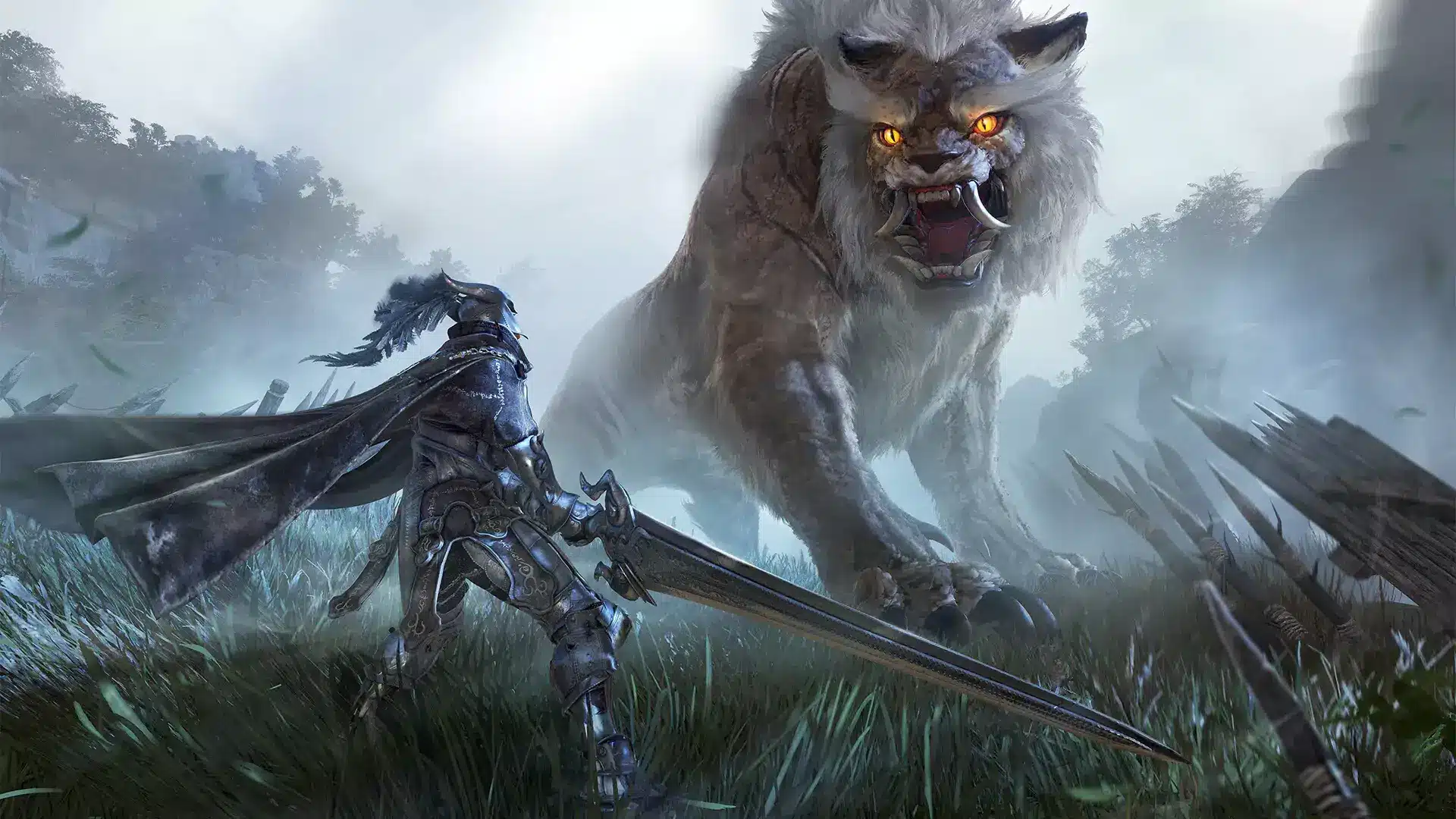
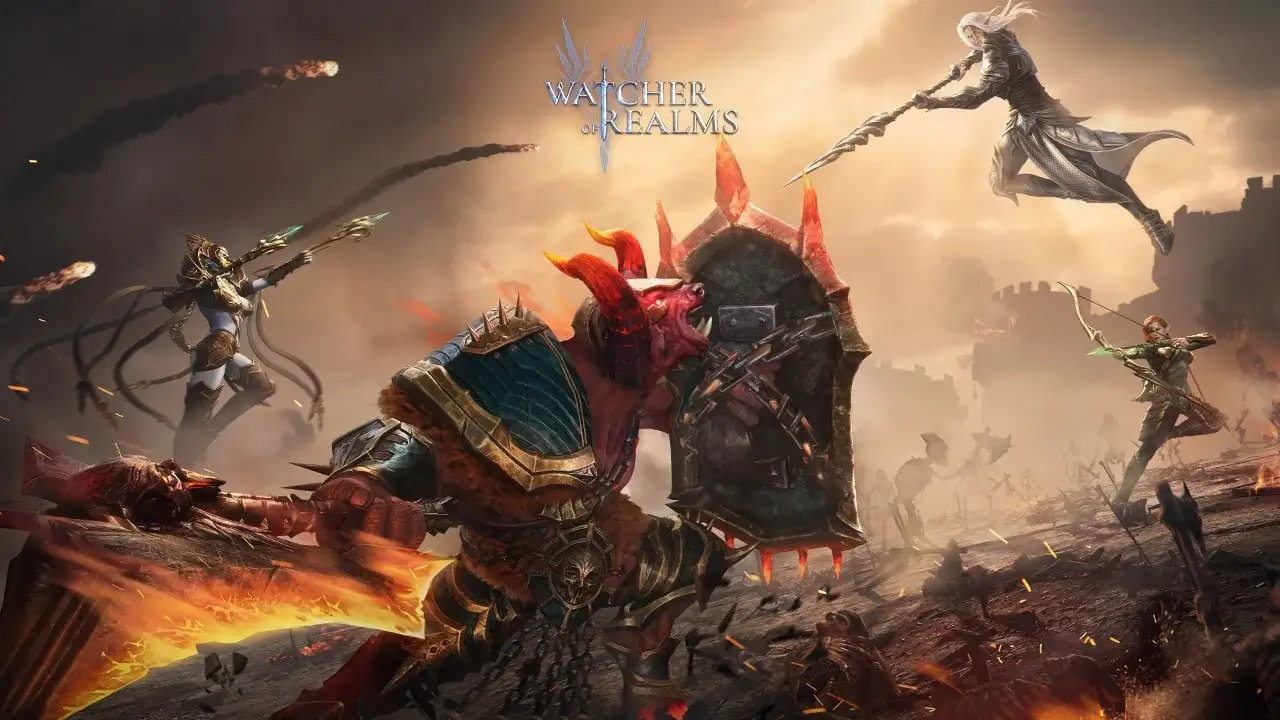

Leave a Reply